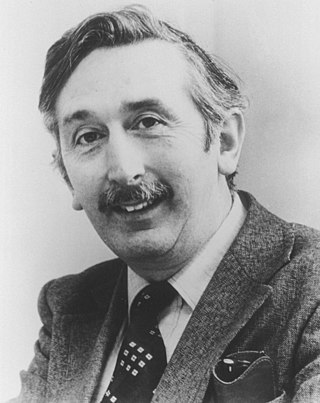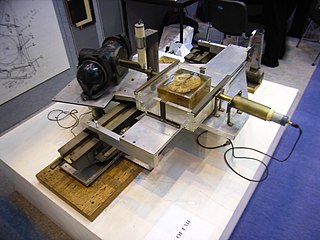
The Nobel Prize in Physiology or Medicine is awarded yearly by the Nobel Assembly at the Karolinska Institute for outstanding discoveries in physiology or medicine. The Nobel Prize is not a single prize, but five separate prizes that, according to Alfred Nobel's 1895 will, are awarded "to those who, during the preceding year, have conferred the greatest benefit to humankind". Nobel Prizes are awarded in the fields of Physics, Medicine or Physiology, Chemistry, Literature, and Peace.

Allan MacLeod Cormack was a South African American physicist who won the 1979 Nobel Prize in Physiology or Medicine for his work on X-ray computed tomography (CT), a significant and unusual achievement since Cormack did not hold a doctoral degree in any scientific field.

Sir Godfrey Newbold Hounsfield was a British electrical engineer who shared the 1979 Nobel Prize for Physiology or Medicine with Allan MacLeod Cormack for his part in developing the diagnostic technique of X-ray computed tomography (CT).

Rondebosch Boys' High School is a public English medium high school for boys situated in the suburb of Rondebosch in Cape Town in the Western Cape province of South Africa. It is one of the oldest schools in the country, having been established in 1897. Rondebosch is the only school in the Western Cape to have a Nobel Prize laureate, Allan M. Cormack in Physiology and Medicine.

A Nobel Committee is a working body responsible for most of the work involved in selecting Nobel Prize laureates. There are six awarding committees from four institutions, one for each Nobel Prize.
William Henry Oldendorf was an American neurologist, physician, researcher, medical pioneer, founding member of the American Society for Neuroimaging (ASN), and originator of the technique of computed tomography.
Cormack is a surname derived from the Irish given name "Cormac", and may refer to:
Christopher L. 'Kit' Vaughan, is Emeritus Professor of Biomedical Engineering in the Department of Human Biology, University of Cape Town in South Africa.

Industrial computed tomography (CT) scanning is any computer-aided tomographic process, usually X-ray computed tomography, that uses irradiation to produce three-dimensional internal and external representations of a scanned object. Industrial CT scanning has been used in many areas of industry for internal inspection of components. Some of the key uses for industrial CT scanning have been flaw detection, failure analysis, metrology, assembly analysis and reverse engineering applications. Just as in medical imaging, industrial imaging includes both nontomographic radiography and computed tomographic radiography.

Tasuku Honjo is a Japanese physician-scientist and immunologist. He won the 2018 Nobel Prize in Physiology or Medicine and is best known for his identification of programmed cell death protein 1 (PD-1). He is also known for his molecular identification of cytokines: IL-4 and IL-5, as well as the discovery of activation-induced cytidine deaminase (AID) that is essential for class switch recombination and somatic hypermutation.

The history of X-ray computed tomography (CT) dates back to at least 1917 with the mathematical theory of the Radon transform. In the early 1900s an Italian radiologist named Alessandro Vallebona invented tomography which used radiographic film to see a single slice of the body. It was not widely used until the 1930s, when Dr Bernard George Ziedses des Plantes developed a practical method for implementing the technique, known as focal plane tomography. It relies on mechanical movement of the X-ray beam source and capture film in unison to ensure that the plane of interest remains in focus with objects falling outside of the plane being examined blurring out.
The George Gamow Memorial Lectures are an annual series of lectures at the University of Colorado Boulder, named in honor of the physicist and science popularizer George Gamow, author of One Two Three... Infinity and the Mr Tompkins series.








